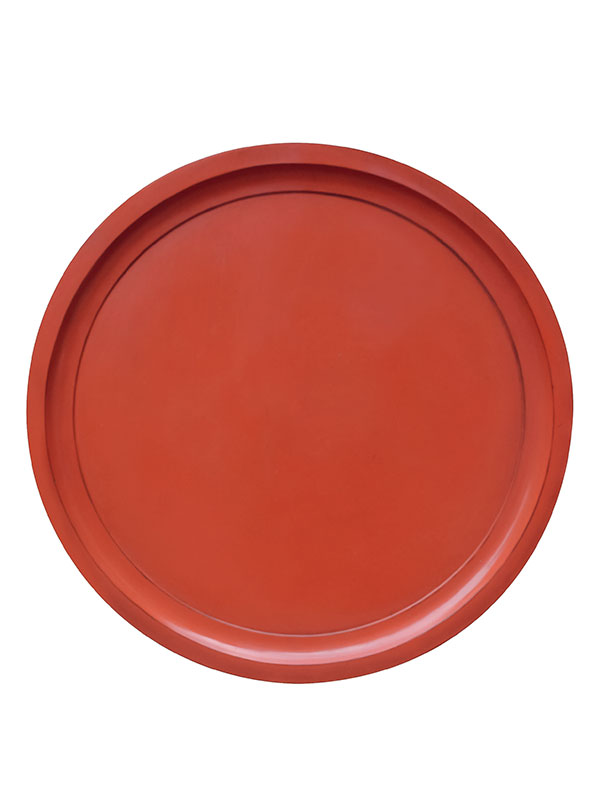Negoro lacquer serving tray
Japan, Edo period, 18th century
A massive Negoro lacquer serving tray of circular form with stepped rim ending in a broad, flat edge. The base is slightly recessed. The tray is covered in layers of vermillion lacquer, with the black base layer beginning to show through in places. The back of the tray is lacquered brown.
The Negoro lacquer technique was developed in Japan during the Kamakura period (1188–1333) in response to Chinese lacquer ware, which was again available in Japan following renewed contact with China in the mid-12th century. The name Negoro comes from the Buddhist temple Negoro-ji in the Kansai region, where lacquer ware was apparently made by monks in training in this style prior to the temple’s destruction by fire in the 16th century. The military commanders (shoguns), who replaced the aristocracy as the primary patrons of the arts at this time, encouraged the establishment of Chinese Zen Buddhist temples in Japan. The Chinese monks who came to Japan to undertake this task brought lacquer objects to use in the temples for ceremonies and for serving food. Their sturdy, sculptural shapes were emulated in Japanese Negoro lacquers. The term has come to mean lacquer ware made with red colouration over black. With use, the red colouration wears away irregularly to reveal the black beneath, creating a mellow, aged appearance. Negoro wares were later particularly appreciated by tea ceremony connoisseurs for this combination of subtle patterning harmonising with sculptural form.

